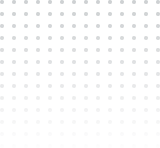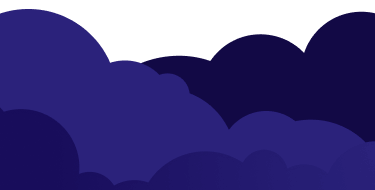A web crawler (or web spider) programmed script surfs the web in an organized, programmed approach. It may be used to cache the recently visited web page to load faster next time or by a search engine bot to know what is there on a web page to retrieve when searched by a user. Search engines provide relevant links in response to user-searched questions by applying a search function through a bot that is in operation almost all the time, spawning the list of webpages that appear after a user enters a query into search engines like Google, Bing, Yahoo, etc.
A web spider bot is like a person who goes to an unorganized library goes through all the books and compiles a card list so that others may swiftly pull out the relevant information. To do this and categorize all the books in the library, that person will read the title, precis, and a little bit of internal context to get to know about books.
Nevertheless, a web crawler works similarly but in a more complex way. The bot will start with a particular web page, followed by its hyperlinks from those pages to the other pages, and follow hyperlinks from the other pages to additional pages.
It is still not known how much search engine bots crawl publicly available data. Simultaneously, some sources estimate it up to 70% of the internet being indexed, which totals billions of pages due to 1.2 million kinds of content published daily.
How Is Search Indexing Done?
Indexing is similar to how a database stores something in an organized manner. Search indexing is done so that there is a database record of what content on the internet can be found through which keyword whenever a query is made.
Indexing focuses on the text on a page and its metadata (which gives information about other data). Whenever a user searches for some words, the search engine goes through the indexes where they appear and show the most relevant ones. Most search engines index a page by adding all the words on the page to the index, unlike Google, which does not index words like “a”, “an” and “the” due to their common use.
How Do Web Crawlers Function?
The internet is continuously evolving. It is not possible to know how many pages are there on the world wide web. A web crawler starts from a seed or a list of known URLs first. They will find hyperlinks to the other URLs, and they add those to the list of pages to crawl next as they crawl those webpages.
A web page quoted by many other webpages and attracts many visitors indicates that it contains authority, high-quality content, so it is necessary that the search engine indexes it.
Following the number of pages on the internet, the search indexing process could go on virtually endlessly. A web crawler observes certain practices that make it more selective about which pages to crawl and what order and the frequency to check the content updates to not crawl indefinitely.
Web crawlers check the robots.txt protocol (robots exclusion protocol) to decide which pages to crawl. The robot.txt file is hosted by the page’s web server. It is a text file that specifies the rules for any bots accessing the hosted website or application of the pages bots can crawl and which links they can follow.
These constituents are weighted uniquely in the proprietary algorithms that each search engine builds into their spider bots. Spider bots from different search engines will behave slightly differently. However, the end goal is to download and index content from webpages.
Web crawlers are also called spiders as they crawl the World Wide Web, which most users access just as real spiders would on spiderwebs.
Why Do You Need a Web Crawler Program?
In today’s digital age, the internet holds an immense amount of information, and it’s growing rapidly. Experts predict that by 2025, the global data volume will exceed 180 zettabytes, with 80% being unstructured data.
Companies are increasingly drawn to using web crawlers for a few key reasons.
Firstly, there’s a rising interest in using data analytics to make informed business decisions. Web Scraping tools help gather and organize this massive amount of unstructured data, helping companies in their analytical pursuits.
While search engine crawling isn’t a new concept and has been around since the late 1990s, it remains relevant. However, the focus on this aspect has matured over time, with companies investing in more advanced crawling techniques.
Despite a few dominant players like Google, Baidu, Bing, and Yandex ruling the search engine industry, there’s still a need for companies to build their own crawlers. This need arises when businesses require specific data or approaches that generic search engines might not provide.
Overall, the demand for web crawler programs stems from the escalating demand for data-driven insights and the need to access and structure the vast and growing amount of information available on the internet.
What Are the Challenges Faced by a Web Crawler Program?
Facing challenges is common for any web crawler program as it goes about its crucial task of gathering information. Here are some hurdles and how they affect the role of web crawlers in information retrieval:
- Database Freshness: Websites frequently update their content, especially dynamic pages that change based on visitor activity. This means the data a crawler collects might quickly become outdated. To ensure users get the latest info, a web crawler program needs to revisit these pages more often.
- Crawler Traps: Some websites use tactics, like crawler traps, to block or confuse crawlers. These traps create loops, making a crawler endlessly request pages, wasting its time and resources.
- Network Bandwidth: When a crawler fetches numerous irrelevant pages or re-crawls extensively, it gobbles up a lot of network capacity. This strains the system and slows down the process.
- Duplicate Pages: Crawlers often encounter the same content across multiple pages, making it tricky for search engines to decide which version to index. For instance, Googlebot selects only one version of similar pages to display in search results.
Overcoming these challenges is essential for the effectiveness and efficiency of a web crawler program in accurate and updated information retrieval from the web.
How Do Web Crawlers Influence SEO?

Search Engine Optimization (SEO) is a technique of preparing content for search indexing. SEO makes a website show up higher in search engine results.
It means that a website can not be indexed if a spider does not crawl it and will not appear in search results. For this very reason, a website owner does not block web crawler bots as they want to get organic traffic from search results.
Should Web Crawler Bots Eternally Stay Permitted to Obtain Web Properties?
Web crawlers require server resources to index content – they make requests that the server needs to respond, similar to a user browsing a website or other bots accessing a website. Depending on the amount of content on each page or the number of pages on the site, it could be in the website owner’s best concern not to allow search indexing too often since too much indexing could overload the server, drive up bandwidth costs, or both. To sum up, that is up to the web property and depends on several factors.
Furthermore, developers or companies may not want some webpages to be accessible unless a user has already been given a link to the page (without putting the page behind a paywall or a login). An example of this case for enterprises is creating a dedicated landing page for a marketing campaign. Still, they don’t want anyone not targeted by the campaign to access the page. In this way, they can customize the messaging or precisely measure the page’s performance. In such cases, the enterprise can add a “no index” tag to the landing page, and it will not appears in search engine results. They can also add a “disallow” tag on the page or in the robots.txt file, and search engine spiders won’t crawl it at all.
Website owners might not want to part, or all of their sites crawled for several reasons. For example, a website that offers users the ability to search within site may want to block the search results pages as these are not valuable for most users. Additionally, other auto-generated pages that are only helpful for one user or a few definite users should be blocked.
Web scraping, content scraping, or data scraping is when a bot downloads the content on a website without permission, often intending to use it for a malicious purpose.
Web scraping is usually much more targeted than web crawling as web scrapers maybe after specific pages or websites. In contrast, web crawlers will keep following links and crawling pages continuously.
Also, web scraper bots may disregard the strain they put on web servers, while web crawlers, especially those from major search engines, will obey the robots.txt file and limit their requests to not overload the server.
Is There any Difference Between Web Crawling and Web Scraping?
Yes, there is a basic difference. Here’s a simple explanation differentiating web crawling from web scraping:
The purpose of a web crawler program is basically scanning and indexing all content on a webpage. It’s like mapping out everything available on a website. On the other hand, web scraping is a specific type of crawling. It’s like using a magnifying glass for targeted information retrieval from the mapped-out data.
Traditionally, after a web crawler program has mapped a webpage, a web scraper would then extract desired data from that map. But nowadays, people often use the terms interchangeably, although “crawler” typically refers more to search engine activities. As more companies use web data, “web scraper” has become a more common term than “web crawler.”
In a nutshell, web crawling is about exploring and cataloging all available information, while web scraping is focused on extracting specific, targeted data from the cataloged information. The role of web crawlers and scrapers cannot be denied as both play significant roles in information retrieval from the web.
What Are the Most Active Web Crawlers on the Internet?
The bots from the most active major search engines are called:
- Google: Googlebot (actually two crawlers, Googlebot Desktop and Googlebot Mobile, for desktop and mobile searches)
- Bing (Microsoft’s search engine): Bingbot
- Yandex (Russian search engine): Yandex Bot
- Baidu (Chinese search engine): Baidu Spider
- Amazon: Amazonbot (web crawler for web content identification and backlink discovery)
- DuckDuckGo: DuckDuckBot
- Exalead (French search engine): Exabot
- Yahoo: Yahoo! Slurp
There are also numerous uncommon web spiders, some of which aren’t affiliated with any search engine.
Why Is it Essential for Bot Management to take Web Crawling into the Record?

Some bad bots can cause a lot of damage, from poor user experiences to server crashes to data theft. However, in blocking those bots, it is necessary to allow good bots like web crawlers, to access web properties. Crawlbase allows good bots to keep accessing websites besides moderating malicious bot traffic.
3 Best Web Crawling Practices
Here are three essential practices for web crawling explained:
1. Politeness/Crawl Rate
Websites control how much a web crawler can explore by setting a “crawl rate.” This rate limits how many times a crawler can visit a site within a specific time, like 100 visits per hour. It’s like respecting a website’s traffic rules to avoid overloading their servers. A good web crawler program sticks to these limits set by the website.
2. Robots.txt Compliance
Imagine a website has a map telling crawlers which areas they can visit. This “map” is the robots.txt file. It guides crawlers on what parts of a site they can explore and index. To be a good crawler, you need to read and follow these instructions in the robots.txt file of each website.
3. IP Rotation
Websites use tricks to spot and block automated crawlers, like CAPTCHAs or tracking techniques. Sometimes, they identify and block “non-human” visitors, which includes bots. To avoid this, smart web crawlers switch their “identity” by using different IP addresses, called rotating proxies, to look more like regular visitors.
Following these practices helps fulfill your web crawler purpose of exploring websites respectfully, following the rules set by each site, and avoid getting blocked or mistaken for a bot.
Bottom Line!
Crawlbase is the ideal web crawling and scraping service for modern organizations. With a number of options to offer, our simple to use application will empower you to begin working immediately without having to worry about proxies, speed of proxies, number of IPs, bandwidth, location, residential or data center. Our APIs are designed particularly for Crawling, Scraping, Proxy, Crawling Storage, Taking Screenshots of websites like images, and accessing millions of company emails and data for your use.











